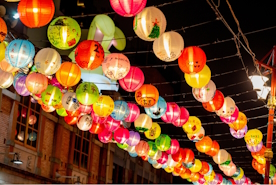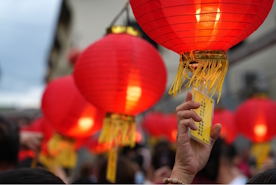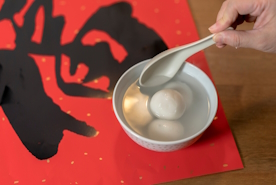
Call 0330 880 3600 Calls may be monitored or recorded. Opening Times.
- TRAVEL INSURANCE
- COVID-19 ENHANCED COVER
- More Options
- Help & Advice
- Existing Customers

Call 0330 880 3600 Calls may be monitored or recorded. Opening Times.

 The roots of the Shang Yuan Festival are thought to go back around 2,000 years to the Han dynasty. Buddhist monks used to light lanterns on the fifteenth day of the first lunar month, and from here it developed into a custom.
The roots of the Shang Yuan Festival are thought to go back around 2,000 years to the Han dynasty. Buddhist monks used to light lanterns on the fifteenth day of the first lunar month, and from here it developed into a custom.
One of the legends states that the Lantern festival is a time to worship Taiyi, who was the ancient God of Heaven. He had 16 dragons and controlled the destiny of the human world, which meant he could also inflict drought, famine, or plague upon its people. The first emperor of China (Qin Shi Huang) would ask Taiyi to bring good health, weather, and fortune to his people, and later during the Han dynasty Emperor Wu brought special attention to this. He declared in 104BC that this was one of the most important celebrations there was, and that the ceremony would last through the night.
Another legend links the Lantern Festival to Taoism, and to the Taoist deity responsible for good fortune: Tianguan. His birthday falls on the fifteenth day of the first lunar month, and he is said to enjoy entertainment of all kinds. Because of this, Tao followers prepare all types of activities, during which they pray to Tianguan for luck.
The next legend speaks of a crane which flew to earth from heaven, which villagers hunted and killed. The Jade Emperor in heaven became angry because they were his favourite animal, so he planned a storm of fire to destroy the village on the fifteenth day of the first lunar month. The village was in turmoil and didn’t know what to do, until a wise man from a neighbouring village suggested they hang red lanterns, light fireworks, and set bonfires to give the illusion that the village was already on fire. They did this on the fourteenth, fifteenth, and sixteenth day of the month, during which the Jade Emperor’s troops were sent to the village, only to turn back when they saw their deed had already been fulfilled. This satisfied the Emperor, and from that day on the people did the same year after year to celebrate.
 The ‘first lunar month’ is in accordance with the Chinese lunisolar calendar, meaning the celebration usually falls around February or March in line with the Gregorian calendar. The fifteenth day falls on the final day of the Chinese New Year celebrations, and for each Lantern Festival celebrated, a change in the Chinese Zodiac occurs. This year for example, the Year of the Tiger (2023/2024), transitions into the Year of the Rabbit (2024/2025).
The ‘first lunar month’ is in accordance with the Chinese lunisolar calendar, meaning the celebration usually falls around February or March in line with the Gregorian calendar. The fifteenth day falls on the final day of the Chinese New Year celebrations, and for each Lantern Festival celebrated, a change in the Chinese Zodiac occurs. This year for example, the Year of the Tiger (2023/2024), transitions into the Year of the Rabbit (2024/2025).
There are multiple ways in which the Shang Yuan Festival is celebrated, but perhaps the most popular is by the lighting of lanterns wherever possible. You’ll find them on the streets, in houses and shops, at the park and temples - everywhere you go there’ll be round, red and gold lanterns to symbolise luck and unity during the festivities. Or there would have been, traditionally. Nowadays you’ll find lanterns in all colours, shapes, sizes, and patterns hung wherever one might hang things. Sky-lanterns have also become a Lantern Festival standard - attach your wishes, dreams, and prayers to a lantern and release it into the night. By doing this, you let go of past troubles and beckon in hope.
The lantern riddle is another true characteristic of the Lantern Festival. Thought to have been around since the Northern Song dynasty in 960 BC, riddles enlighten their guessers, contributing to the atmosphere and paying homage to the wisdom of the ancients. The game is played as such: the host stands on one side of a lantern and pastes riddles to the remaining sides. Participants “break the riddle” by tearing the riddle from the lantern, guessing the answer, and submitting it to the host. If you answer correctly you’ll win a prize! But if you don’t, you can always treat yourself to a bowl of yuanxiao.
 Yuanxiao, or tangyuan, which are the same style of filled glutinous rice balls named differently in the North and South of China. The balls can be sweet and filled with red bean paste or peanut butter, or savoury with a minced meat or vegetable filling - either way, their shape is said to represent the full moon. The way yuanxiao are presented in the bowl is also representative of togetherness, union, and harmony. Eating them with your family brings good fortune for you all in the New Year.
Yuanxiao, or tangyuan, which are the same style of filled glutinous rice balls named differently in the North and South of China. The balls can be sweet and filled with red bean paste or peanut butter, or savoury with a minced meat or vegetable filling - either way, their shape is said to represent the full moon. The way yuanxiao are presented in the bowl is also representative of togetherness, union, and harmony. Eating them with your family brings good fortune for you all in the New Year.
The Shang Yuan Lantern Festival is a time for tradition and community, marking both closures and beginnings.

19th February 2024